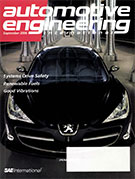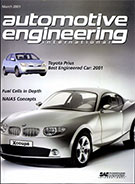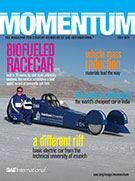Magazine

Automotive Engineering International 2006-09-01
2006-09-01
Systems drive safety Engineers are using a holistic approach to design safer vehicles by adding function and integrating multiple subsystems. The gas in greener Biodiesels promise to help reduce petroleum consumption and CO2 emissions, but much of the potential depends on production and infrastructure investment. Good vibrations Instead of excising all noise, vibration, and harshness, engineers are focusing more on making specific sounds and feedback "fit" a vehicle. SAE Commercial Vehicle Congress Preview International Truck and Engine executives head the charge for "positive industry change" at SAE's third Congress for the on- and off-highway communities.








